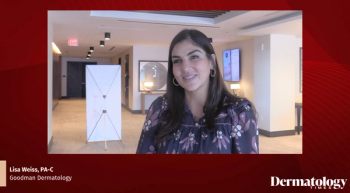
Recommendations for Treating Oily and Acne-Prone Skin
Key Takeaways
- Oily and acne-prone skin is challenging due to sebum overproduction, bacterial proliferation, and treatment-related irritation.
- Combination treatments, including topical retinoids and antibiotics, are often recommended to manage acne effectively.
The management of oily and acne-prone skin remains a challenge for both patients and dermatology professionals.
Oily and acne-prone skin can be challenging to treat due to several factors. The overproduction of sebum by the sebaceous glands can become pore-clogging, which leads to the formation of comedones. The proliferation of acne-causing bacteria such as Propionibacterium acnes can worsen this condition. Also, some of the conventional acne treatments such as benzoyl peroxide and topical retinoids can be irritating to the skin causing dryness and erythema.
To address these challenges, dermatology providers often recommend a combination treatment. This may include topical retinoids, such as tretinoin or tazarotene, which help to unclog pores and reduce inflammation. This is, of course, after the initial phase of irritation often caused by topical retinoids. Antibacterial agents, either topical or oral, may also be used to target inflammation. The tetracycline family of antibiotics is most widely used for this purpose. For cystic acne, or acne that is recalcitrant to treatment, an oral retinoid is useful to inhibit sebaceous gland function thereby reducing sebum production. Topical clascoterone cream may also be useful in combating oil production by inhibiting the action of androgen receptors in the sebaceous gland. In addition to combatting acne, topical clascoterone may also make the skin less oily overall.
Despite the availability of these various treatment options, the management of oily and acne-prone skin remains a challenge for both patients and dermatology professionals. Treatment adherence is a major barrier to the effective management of acne. Patients often struggle to comply with the prescribed treatment regimen, especially when it involves multiple medications. The adverse effects of some acne medications may also be a significant obstacle to treatment adherence. Certain topical and oral medications can cause skin irritation, dryness, redness, or burning. This generally subsides after time, but the initial uncomfortableness can be difficult for some patients to tolerate. Cost also plays a factor when treating acne-prone skin as many medications are expensive, and may not be covered by insurance, making them inaccessible to many patients. Many of the newer acne medications that promise less irritation or improved results are often denied by insurance until the patient has failed two or sometimes three other therapies first.
Patients often don’t know where to begin when creating a skin care regimen, so we as dermatology providers can offer guidance here. I often recommend the “less is more” approach as fewer steps will increase adherence. A typical skin care routine may look like the following:
AM Routine: Thoroughly cleanse skin with a gentle cleanser. Cleansers with salicylic acid or benzoyl peroxide may be effective if tolerated. A topical antibiotic such as clindamycin or minocycline may be applied. I always recommend the daily use of an oil-free SPF 30 or higher. If the patient requires additional moisture, an oil-free moisturizer may be used prior to applying SPF.
PM Routine: Thoroughly cleanse skin with a gentle cleanser. Apply a topical retinoid. If additional hydration is needed follow with an oil-free moisturizer.
I advise my patients to avoid products with fragrance or dyes as these can often be irritating. I also advise against the use of essential oils and suggest that my patients look for labels stating “oil-free” or “non-comedogenic” as these would be the most appropriate for their skin. I always reassure my patients that there are many ways to treat their acne, and that the first treatment tried may not always be the most effective. Giving a realistic expectation of results at one and three months into treatment gives the patient guidance when evaluating their outcomes.
Despite the many challenges to treating this skin type, patients may achieve treatment success by remaining diligent with their prescribed skin care regimen and continued guidance from their dermatology provider.
Vincent Smith, DNP, ANP-C, DCNP, is a board-certified dermatology nurse practitioner specializing in both medical and cosmetic dermatology. Throughout his 12 years of clinical dermatology experience, he has developed a passion for treating inflammatory diseases such as acne, psoriasis, atopic dermatitis, and hidradenitis suppurativa. When not seeing patients in his clinic he enjoys skiing, visiting Italy, and playing with his 9-year-old Greyhound.
Newsletter
Like what you’re reading? Subscribe to Dermatology Times for weekly updates on therapies, innovations, and real-world practice tips.

















